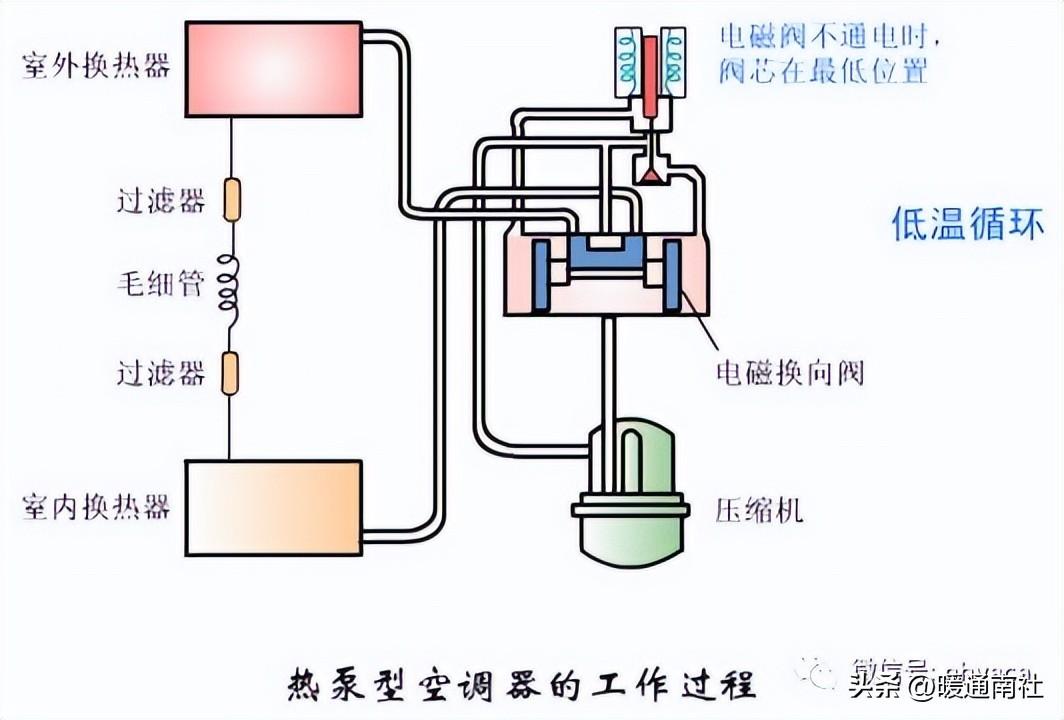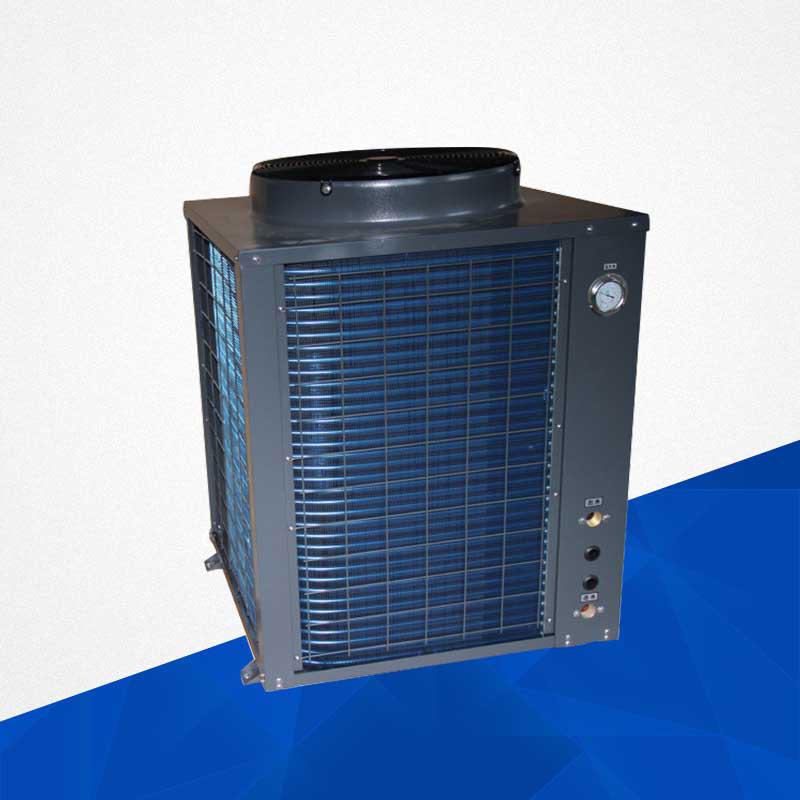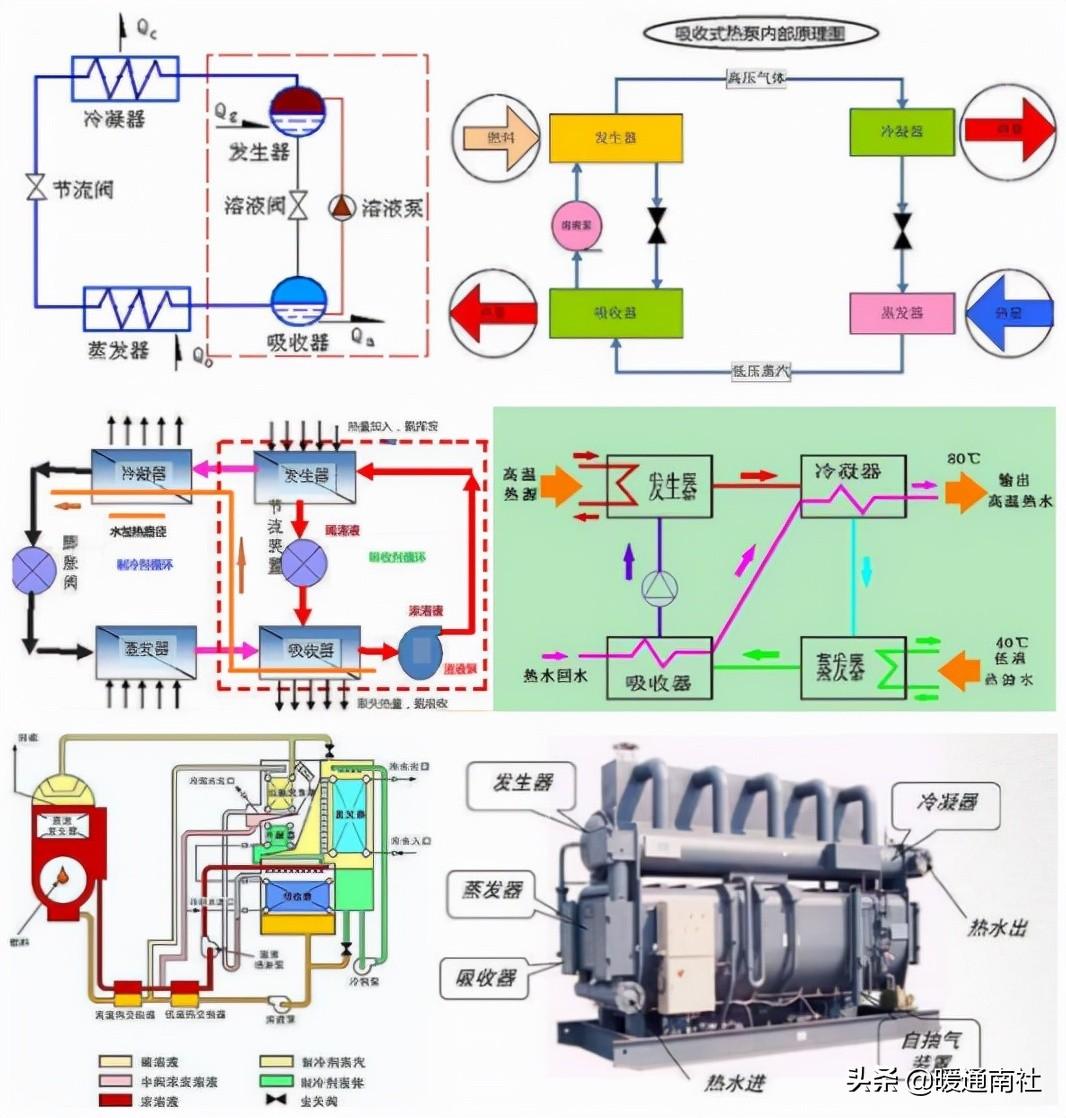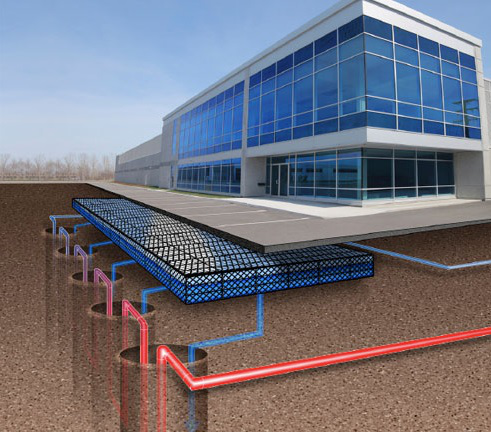Heat pump type air conditioner:
On the basis of an ordinary air conditioner, a four-way reversing valve is installed, and the operation of the valve is changed so that the functions of the evaporator and condenser of the original air conditioner can be exchanged with each other, thus changing the function of cooling the indoor air to that of heating the indoor air. We call this type of air conditioner, which can extract heat from the lower outdoor air in winter and use it to heat the indoor air, and can remove the heat from the indoor air and transmit it to the outdoor air in summer, a heat pump air conditioner.

Heat pump air conditioner mainly contains: indoor heat exchanger, outdoor heat exchanger, compressor, capillary tube, gas-liquid separator and four-way valve and other components.
When the heat pump type air conditioner is operating in the cooling condition, the four-way valve is reversed so that the solid line in the diagram is turned on. At this time, the indoor heat exchanger becomes the evaporator, while the outdoor heat exchanger becomes the condenser. From the indoor heat exchanger to the low-temperature, low-pressure superheated gas through the four-way valve and muffler into the gas-liquid separator. Separated from the liquid, dry superheated gas by the compressor suction compression into a high-temperature, high-pressure gas wandering, the gas through the four-way valve into the outdoor heat exchanger exothermic condensation, becoming subcooled liquid. Subcooled liquid by the capillary resistance pressure reduction after becoming a low-temperature, low-pressure two-phase fluid, into the indoor heat exchanger evaporation and heat absorption (at this time, the indoor air is cooled down), and then once again by the four-way valve and gas-liquid separator into the next cycle.
When a heat pump air conditioner is operated in the heating condition, the four-way valve commutation line is turned on. At this time, the indoor heat exchanger becomes the condenser, and the outdoor heat exchanger becomes the evaporator. From the outdoor heat exchanger to the low-temperature, low-pressure superheated gas through the four-way valve and muffler into the gas-liquid separator, after separating out the liquid, the dry superheated gas is sucked by the compressor compressed into a high-temperature, high-pressure gas wandering, the gas through the four-way valve into the indoor heat exchanger exothermic condensation (at this time, the indoor air is heated). Become subcooled liquid, subcooled liquid by the capillary resistance to pressure reduction after becoming a low-temperature, low-pressure two-phase fluid. Into the outdoor heat exchanger evaporation heat absorption, followed by superheated gas by four-way valve and gas-liquid separator into the next cycle.
In order to prevent indoor comfort from decreasing due to defrosting during heating, the defrosting method of uninterrupted heating is adopted by bypassing the hot gas. When defrosting, the operation principle is basically the same as heating, only the defrost solenoid valve is opened. From the compressor out of the high-temperature, high-pressure superheated gas is partly shunted to the population of the outdoor heat exchanger, the outdoor heat exchanger to quickly raise the temperature to the O ℃ or more, melting off the outdoor heat exchanger on the layer of frost, so that the heat exchanger to maintain a good heat transfer efficiency.
Auxiliary electric heating type air conditioner:
Air conditioning auxiliary heat should refer to the auxiliary electric heating function, air conditioning in the refrigeration and heating generally depends on the power of the compressor, the basic principle is the same, in the summer air conditioning to reduce a few degrees can achieve the cooling effect, but in the winter, the temperature usually rises dozens of degrees, at this time relying on the compressor to do the work is very difficult to achieve the desired effect, at this time it is necessary to auxiliary electric heating, that is, add the heating rod type of bent tube in the machine Inside the heating rod type of pipe to assist in heating to achieve the desired effect.

Air conditioning electric auxiliary heat technology is PTC electric auxiliary heat technology, PTC is a semiconductor heating ceramics, when the external temperature decreases, the resistance value of the PTC decreases, but the heat will increase accordingly. According to this principle, the air conditioner with PTC electric auxiliary heat technology can automatically change the heat generation according to the change of room temperature and the size of indoor air volume, so as to adjust the indoor temperature appropriately, and achieve the purpose of rapid and powerful heating. Generally speaking, the cold weather seriously affects the normal play of the air conditioning heating function, and air conditioning with electric heat function, due to the electric heat on the air conditioning heat regulation, auxiliary role, it is very good to overcome this shortcoming, very suitable for the use of cold areas.
Winter due to the outdoor temperature was lower, coupled with the outdoor unit is blowing cold air to the outdoors, resulting in a relatively slow cold source of distribution, which will directly affect the compression mechanism of the heating effect, many air conditioning manufacturers in order to meet the national heating standards, all had to add an electric auxiliary heat function, of course, there are individual because of the opening of the mechanism of the amount of heat is too slow, all to add an electric auxiliary heat function. All, from the efficacy of the electric auxiliary heat can be dispensable. At the same time, you can also roughly know whether your air conditioning heating capacity is up to standard.
Electricity auxiliary heat working principle: the use of thermistor, natural resistance increases dramatically, the current is also rapidly reduced, can make electricity auxiliary heat to maintain a relatively constant value. There are ceramic and metal materials composition.






